15 have author last names that start with K have author last names that start with K
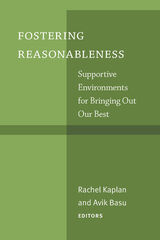
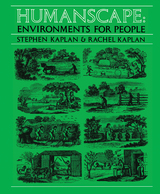

• 26 chapters covering all basic tissues and major organs/organ systems of human histology
• More than 1100 high quality histological images on 724 pages
• 236 image-based multiple choice review questions
• Volume 1: Introduction, Epithelia, Connective Tissue, Cartilage, Bone, Blood
• Volume 2: Muscle, Nervous System, Eye, Ear, Circulatory System, Lymphatic System
• Volume 3: Respiratory System, Integument, Oral Glands, Oral Cavity, Gastrointestinal Tract, Liver, Gall Bladder & Pancreas
• Volume 4: Endocrine Organs, Urinary System, Male Reproductive System, Female Reproductive System, Mammary Gland
“Don MacCallum’s Michigan Histology” is complemented by the Michigan Histology Virtual Slide Collection, which can be accessed for free via the Internet at http://histology.sites.uofmhosting.net
Volume 1 of this 4 Volume lab manual set is concerned with the Histology of human tissues. It covers Epithelia, General Connective Tissue, Cartilage, Bone and Blood with a descriptive text and pictures.

• 26 chapters covering all basic tissues and major organs/organ systems of human histology
• More than 1100 high quality histological images on 724 pages
• 236 image-based multiple choice review questions
• Volume 1: Introduction, Epithelia, Connective Tissue, Cartilage, Bone, Blood
• Volume 2: Muscle, Nervous System, Eye, Ear, Circulatory System, Lymphatic System
• Volume 3: Respiratory System, Integument, Oral Glands, Oral Cavity, Gastrointestinal Tract, Liver, Gall Bladder & Pancreas
• Volume 4: Endocrine Organs, Urinary System, Male Reproductive System, Female Reproductive System, Mammary Gland
“Don MacCallum’s Michigan Histology” is complemented by the Michigan Histology Virtual Slide Collection, which can be accessed for free via the Internet at http://histology.sites.uofmhosting.net
Volume 2 of this 4 Volume lab manual set is concerned with the Histology of human tissues. It covers Muscle, Nervous System, Eye, Ear, Circulatory System, and Lymphatic System with a descriptive text and pictures.

• 26 chapters covering all basic tissues and major organs/organ systems of human histology
• More than 1100 high quality histological images on 724 pages
• 236 image-based multiple choice review questions
• Volume 1: Introduction, Epithelia, Connective Tissue, Cartilage, Bone, Blood
• Volume 2: Muscle, Nervous System, Eye, Ear, Circulatory System, Lymphatic System
• Volume 3: Respiratory System, Integument, Oral Glands, Oral Cavity, Gastrointestinal Tract, Liver, Gall Bladder & Pancreas
• Volume 4: Endocrine Organs, Urinary System, Male Reproductive System, Female Reproductive System, Mammary Gland
“Don MacCallum’s Michigan Histology” is complemented by the Michigan Histology Virtual Slide Collection, which can be accessed for free via the Internet at http://histology.sites.uofmhosting.net
Volume 3 of this 4 Volume lab manual set is concerned with the Histology of human tissues. It covers Respiratory System, Integument, Oral Glands, Oral Cavity, Gastrointestinal Tract, Liver, Gall Bladder, and Pancreas with a descriptive text and pictures.

• 26 chapters covering all basic tissues and major organs/organ systems of human histology
• More than 1100 high quality histological images on 724 pages
• 236 image-based multiple choice review questions
• Volume 1: Introduction, Epithelia, Connective Tissue, Cartilage, Bone, Blood
• Volume 2: Muscle, Nervous System, Eye, Ear, Circulatory System, Lymphatic System
• Volume 3: Respiratory System, Integument, Oral Glands, Oral Cavity, Gastrointestinal Tract, Liver, Gall Bladder & Pancreas
• Volume 4: Endocrine Organs, Urinary System, Male Reproductive System, Female Reproductive System, Mammary Gland
“Don MacCallum’s Michigan Histology” is complemented by the Michigan Histology Virtual Slide Collection, which can be accessed for free via the Internet at http://histology.sites.uofmhosting.net
Volume 4 of this 4 Volume lab manual set is concerned with the Histology of human tissues. It covers Endocrine Organs, Urinary System, Male Reproductive System, Female Reproductive System, and the Mammary Gland with a descriptive text and pictures.
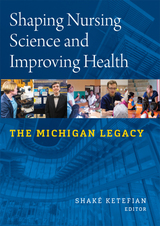
The work covers selectively the development of nursing science over a period of some thirty years which was undertaken by nursing faculty and the School’s PhD Alumni. The account of the strategic development of a program of research across bio-behavioral phenomena, health promotion/risk reduction, women’s health and nursing and health care systems is instructive. Substantive contributions have been made across the selected areas; of note also is the impact of translational science on health outcomes of individuals and communities. The accounts of the purposeful development of health informatics in nursing and leadership as scholarship are also highly developed. The book is a valuable contribution to the literature on how nursing research at Michigan is helping transform the lives of patients, families and communities.
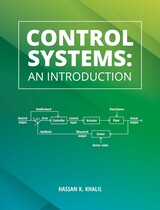

通訳者は状況に合わせて的確な言葉を発することが非常に重要であることを承知しています。 医療通訳者にとって専門分野に特有の言葉を素早く探すことが困難な場合もあるでしょう。 「キブラーの通訳者向け医学用語集」は目的の擁護へ素早くたどりつくための実際に役立つ資料です。
• Speeds up your word-finding. Unlike a typical dictionary, Kibler’s Medical Terms for Interpreters is organized in sections by medical specialty, so you can quickly locate the specific words that will be useful for a patient encounter.
• Makes medical words easily accessible, from common terms to highly technical jargon.
• Reduces the need to search a dictionary for individual words while interpreting.
• Has proved to be a valuable resource for both beginning and veteran interpreters.
• Is easily used while interpreting or when preparing prior to an appointment.
• 用語の検索が速くなります。典型的な辞書とは異なり「キブラーの通訳者向け医学用語集」は専門分野ごとに分類されており、患者さんの診察時に特定の単語を素早く見つけることができます。
• 一般的な言葉から高度な専門用語まで様々な医療用語を簡単に利用することができます。
• 通訳中に特定の言葉を辞書で調べる手間が省けます。
• 初級の通訳者にも、ベテランの通訳者にも価値のある参考資料であることが実証されています。
• 通訳の途中でも事前の予習時でも簡単に使うことができます。

通訳者は状況に合わせて的確な言葉を発することが非常に重要であることを承知しています。 医療通訳者にとって専門分野に特有の言葉を素早く探すことが困難な場合もあるでしょう。 「キブラーの通訳者向け医学用語集」は目的の擁護へ素早くたどりつくための実際に役立つ資料です。
• Speeds up your word-finding. Unlike a typical dictionary, Kibler’s Medical Terms for Interpreters is organized in sections by medical specialty, so you can quickly locate the specific words that will be useful for a patient encounter.
• Makes medical words easily accessible, from common terms to highly technical jargon.
• Reduces the need to search a dictionary for individual words while interpreting.
• Has proved to be a valuable resource for both beginning and veteran interpreters.
• Is easily used while interpreting or when preparing prior to an appointment.
• 用語の検索が速くなります。典型的な辞書とは異なり「キブラーの通訳者向け医学用語集」は専門分野ごとに分類されており、患者さんの診察時に特定の単語を素早く見つけることができます。
• 一般的な言葉から高度な専門用語まで様々な医療用語を簡単に利用することができます。
• 通訳中に特定の言葉を辞書で調べる手間が省けます。
• 初級の通訳者にも、ベテランの通訳者にも価値のある参考資料であることが実証されています。
• 通訳の途中でも事前の予習時でも簡単に使うことができます。


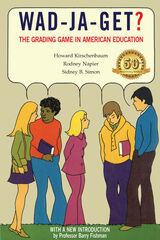
Grades and grading are an accepted part of modern education. But why? Why do we accept a system that is more focused on ranking students than on learning? Why do we accept the negative effects of standard grading approaches, including turning students off from learning, increasing stress, creating winners and losers, and perpetuating racial and economic inequality? Why do we accept these things when there are better alternatives?
Wad-Ja-Get? is a unique discussion of grading and its effects on students. The book was written by three education professors who have had first-hand contact with the problems of grading in all its forms. Written in the form of a novel, the topic is explored through the eyes of students, teachers, and parents in one high school embroiled in a controversy around grading. Possible alternatives to the grading system are examined in detail and the research on grading is summarized in an appendix. This 50th anniversary edition of the book includes a new introduction by Professor Barry Fishman, updating the research and setting the original book in the context of today’s educational and societal challenges. Wad-Ja-Get? remains timely five decades after its original publication, and will be inspiring to students, parents, educators, and policymakers.

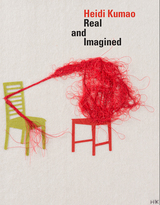
For over thirty years, Kumao has developed an expanded art practice that includes animations, video installations, photographs, machine art, and fabric works that give physical form to the intangible parts of our lives: our emotions, psychological states, memories, thinking patterns. Her hybrid artworks have included electromechanical girl’s legs that “misbehave,” video installations about surviving confinement, surreal, experimental stop motion puppet animations, performative staged photographs, and hand crafted cinema machines.
She has exhibited her award-winning artwork in solo and group exhibitions nationally and internationally including the Art Science Museum Singapore, Centre de Cultura Contemporània de Barcelona, the Museum of Image and Sound (São Paulo) and the Museum of Modern Art in Buenos Aires. Her work is in permanent and private collections including the Houston Museum of Fine Arts, Arizona State University Art Museum, the Philadelphia Museum of Art and the Exploratorium in San Francisco. She has received fellowships and grants from the Guggenheim Foundation, the Creative Capital Foundation, and the National Endowment for the Arts. She is a professor at the Stamps School of Art & Design at the University of Michigan, Ann Arbor.
This exhibition catalogue marks the first significant publication on Kumao’s work and includes a selection of works from across her career. It includes written contributions by: Srimoyee Mitra, curator and Director of the Stamps Gallery and NYC-based art critic; Wendy Vogel; an interview between the artist and writer Lynn Love; and poems by the Ruth Lilly Poetry Prize Award winner Marilyn Chin.
READERS
Browse our collection.
PUBLISHERS
See BiblioVault's publisher services.
STUDENT SERVICES
Files for college accessibility offices.
UChicago Accessibility Resources
home | accessibility | search | about | contact us
BiblioVault ® 2001 - 2024
The University of Chicago Press









